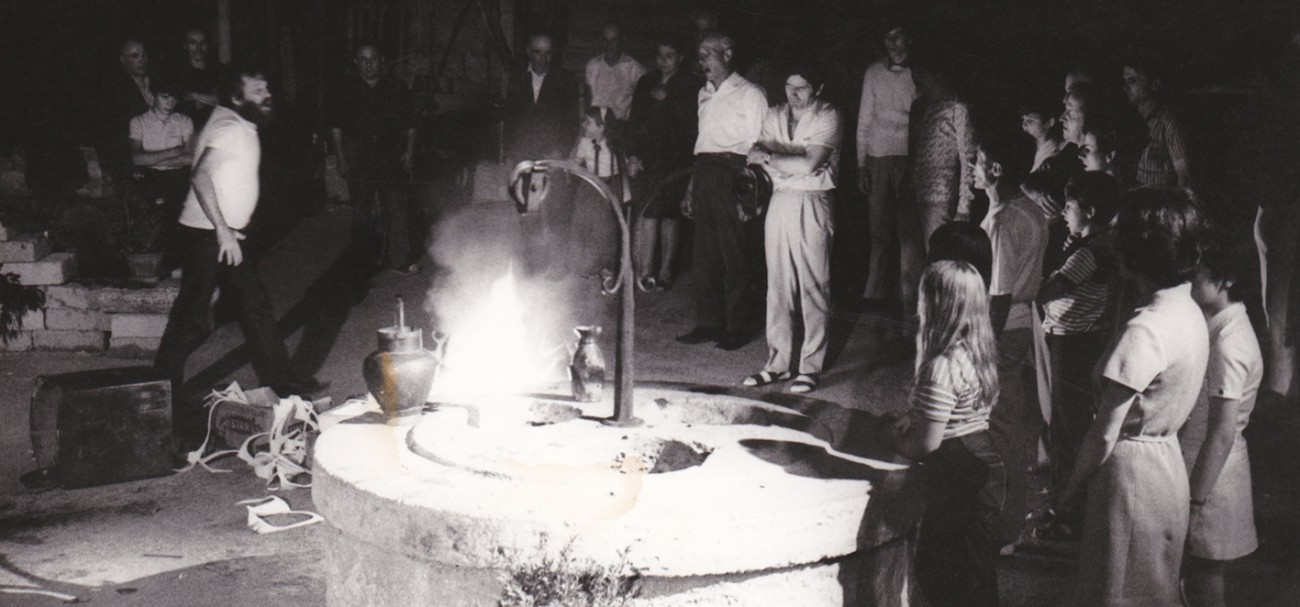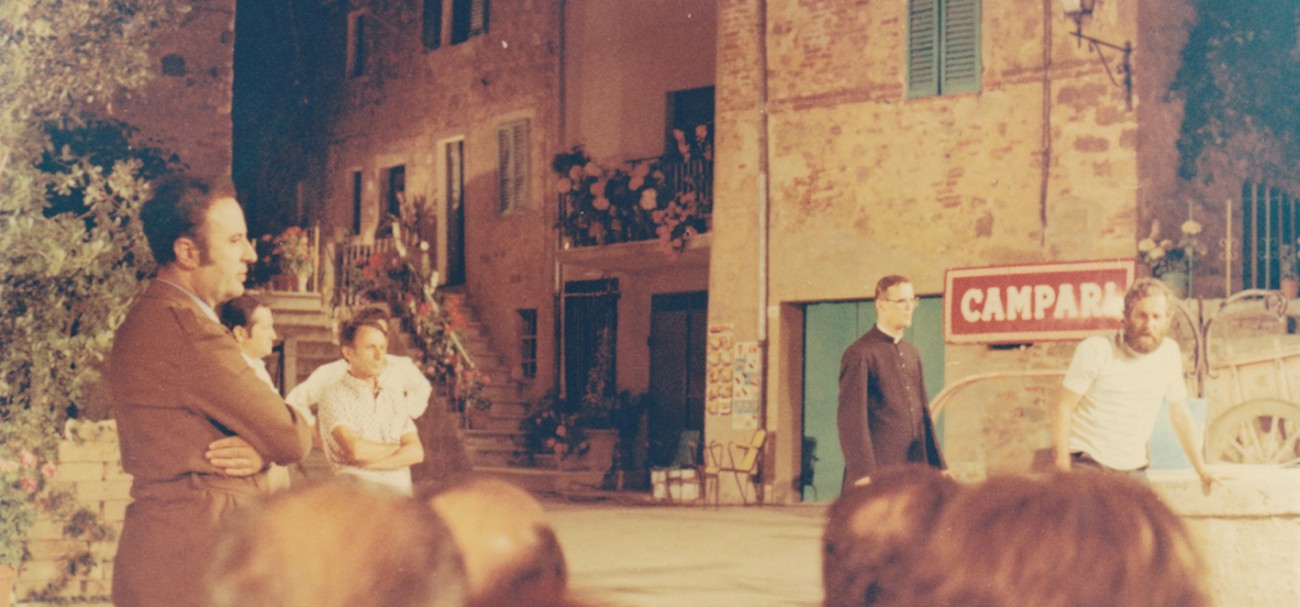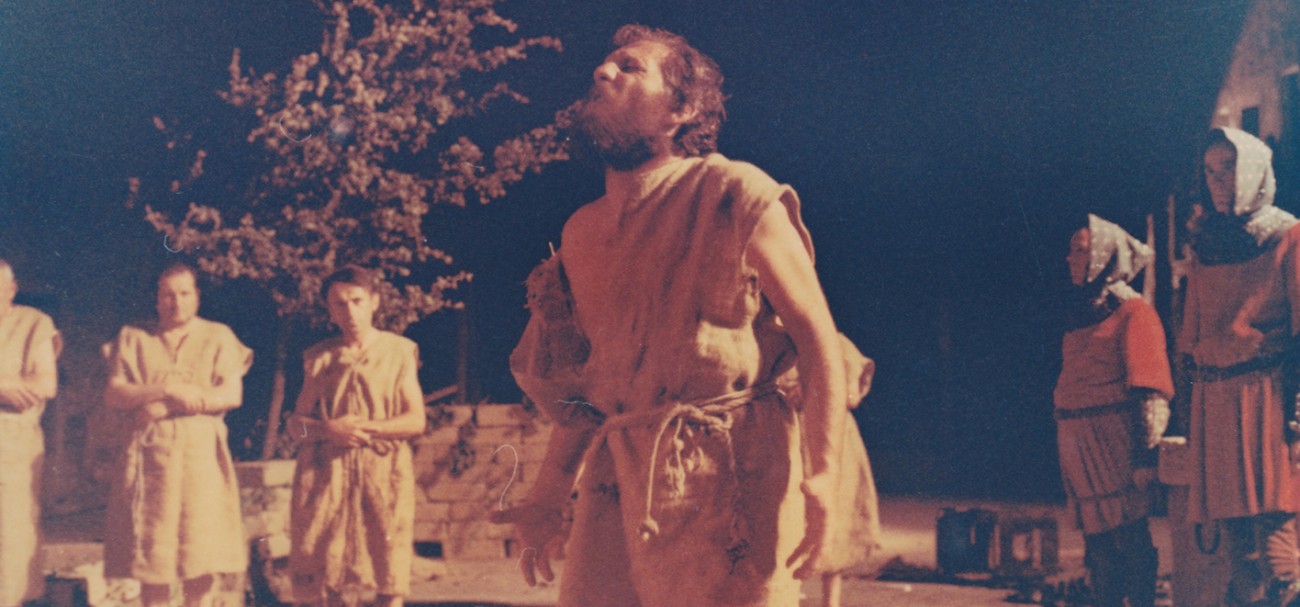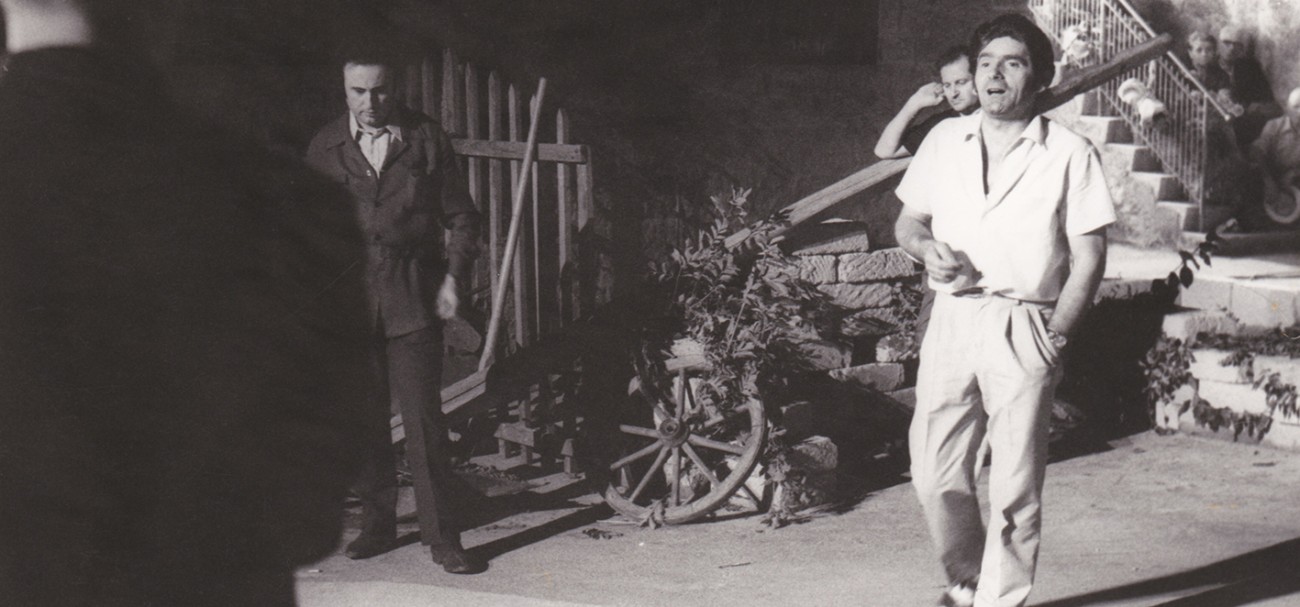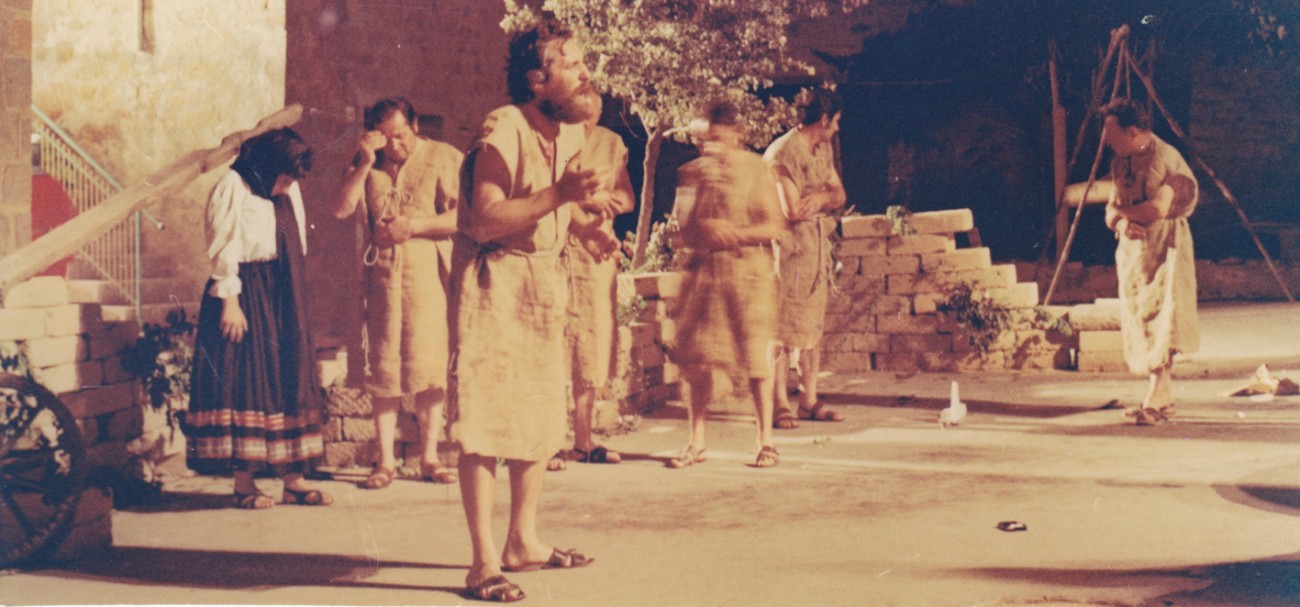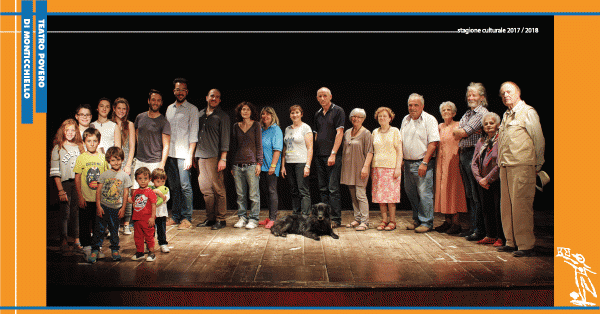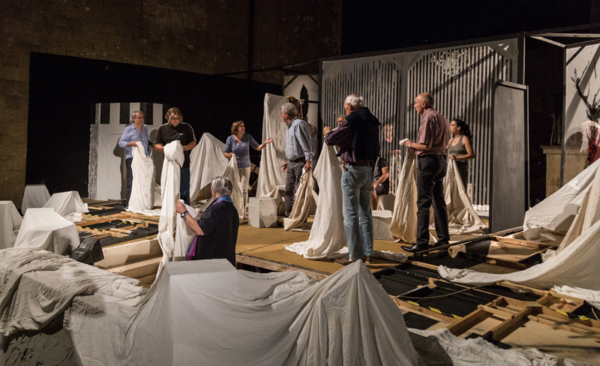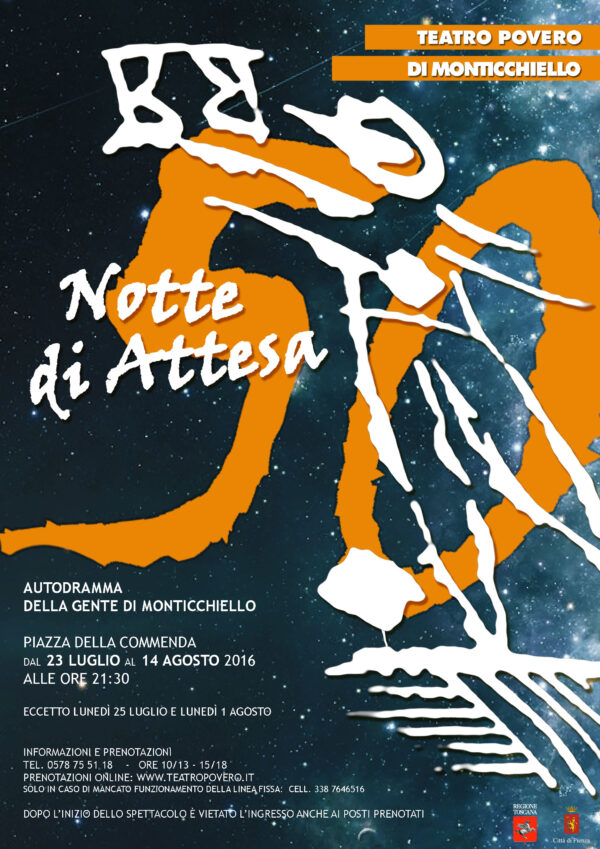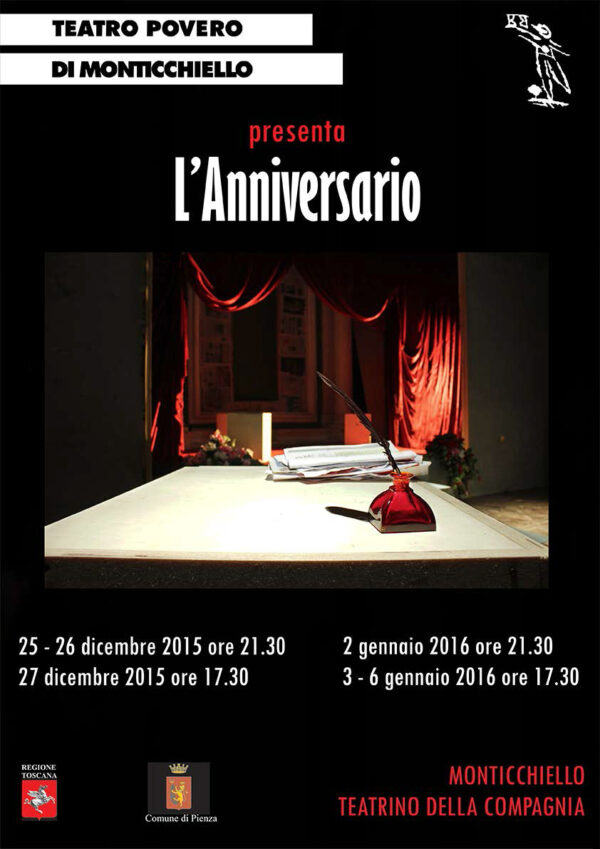That 6th of April in 1944 had dealt for the first time with an event from contemporary local history. We from Monticchiello had sifted through the daily lives of people in the village. These were now two starting points for the “autodramatic” development of Monticchiello’s theatre project.
“Autodramma”—the term was coined by internationally renowned theatre director Giorgio Strehler—consists in turning the memories and experience of a community into live theatre, with as few fictional transformations as possible; allowing the actors, as far as possible, to “perform themselves”. But the community was still also preoccupied with stories and myths from history which still seemed to impinge on the present.
This play was concerned with a mystic character and a religious movement in the fourteenth century: the Blessed Francesco of Monticchiello, and the society of Gesuati. These were considered as possible models for behaviour in modern times. The Gesuati were a protest movement, not violent but certainly not silent or isolated, which resisted materialism and the concentration of power in a small oligarchy. By an attempt to reincarnate this mysticism, the actors sought to discover which elements of it were still exploitable. This exploration tended towards the idea that salvation was still an achievable human aim, however much conditions may have changed.


